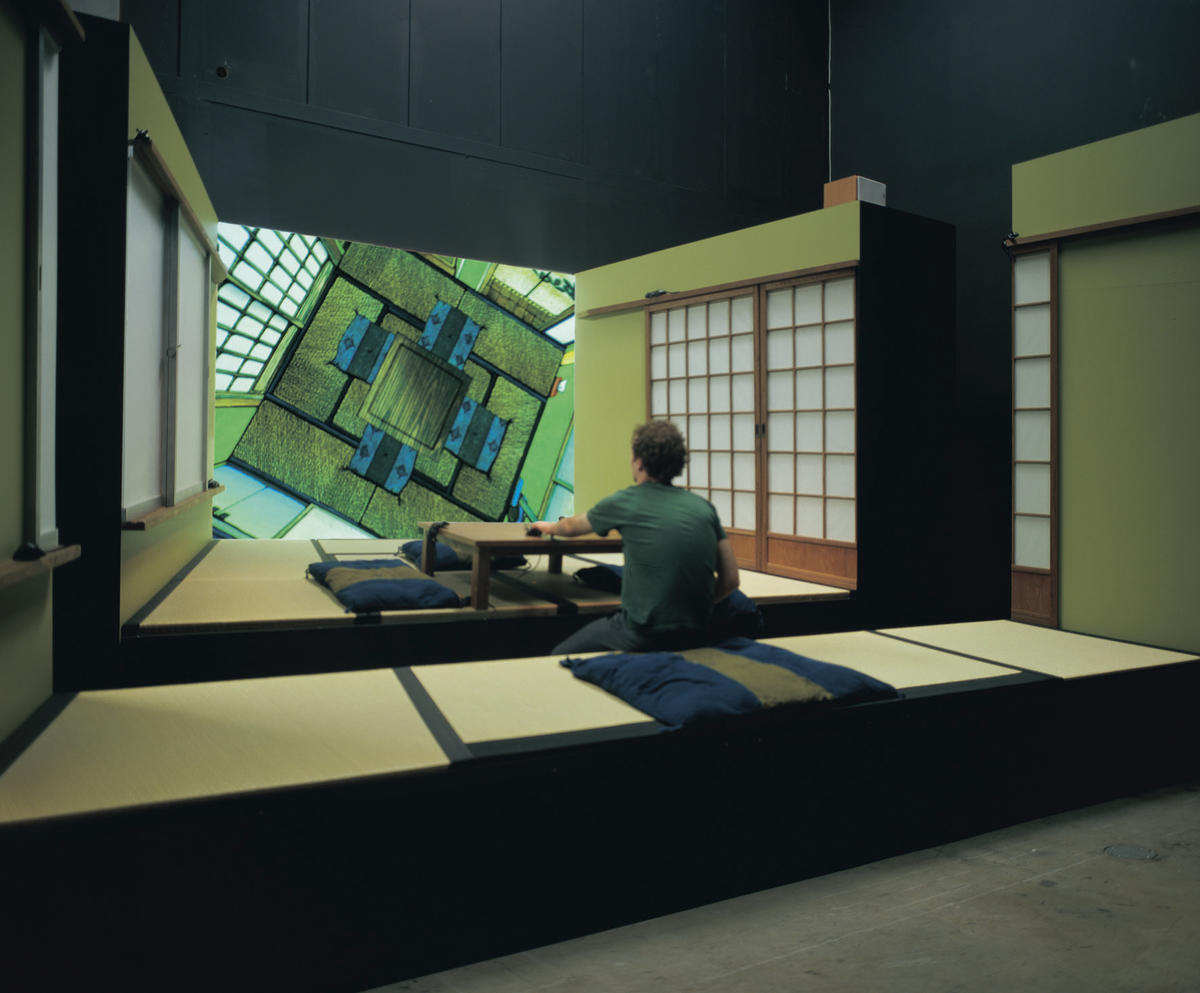Japanese Interior
-
Tabaimo (Ayako Tabata)
b.1975

Title
Japanese Interior
Details
| Production Date | 2002 |
|---|---|
| Collection(s) | Collection Govett-Brewster Art Gallery, New Plymouth |
| Accession Number | 2004/1 |
| Media | Mixed media installation with customised computer |
| Measurements | 5500 x 3100 x 3300mm |
About
Japanese Interior is an installation and interactive video work by Japanese artist Tabaimo. The audience sits on a tatami mat within three-dimensional architecture and navigates a Japanese household using a mouse and trackpad. Active and unscripted, Japanese Interior places the viewer in charge of their experience. As in a video game, they guide the camera through space as the director of their own expedition. Inside, a housewife and her salaryman husband go about their daily lives. Exploration gradually gives way to increasingly bizarre vignettes featuring animated objects: a man trapped in the refrigerator, a woman preparing a meal of strange ingredients, and a sumo wrestler who sucks the life from his opponent. Punctuated by unexpected moments of violence and the bizarre, Japanese Interior offers a playful interrogation of anxiety, alienation and culture in contemporary Japan.
Tabaimo’s installation is a collision between Edo-period traditions and new media. The lines are drawn by hand, scanned and then coloured digitally using a palette drawn from Ukiyo-e prints. She employs the rich hues, bold lines and textural shading reminiscent of the prints of Hokusai (1760–1849). Digitally rendered, Tabaimo’s scenes become vibrant, theatrical spaces that reveal the uncanny hidden in the everyday. The viewer haunts the interior—often floating voyeuristically above the scene. Ukiyo-e translates to ‘pictures of the floating world,’ and as Tabaimo’s scenes spring to life, they too become increasingly surreal and dreamlike. The viewer lingers in their experience of the animated world and begins to blend into the installation. Surrounded by the built environment—shoji doors, chabudai (a low-table) and tatami—they are both observer and observed. Onlookers see an actor within the confines of a film set, quietly and wholly immersed in their digital experience, becoming characters in Tabaimo’s theatre of the absurd.
— Maya Love, 2022